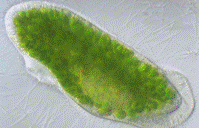Biological Sciences, School of

School of Biological Sciences: Faculty Publications
Document Type
Article
Date of this Version
6-2005
Abstract
Increasing recognition of the problems posed by invasive, exotic species has led to a recent upsurge of interest in the potential of biological control as a sustainable management strategy. The idea that ‘‘natural control’’ could be re-established on a species in its new environment is a seductive one, nurtured by a small set of impressive success stories and the belief in a simple solution (‘‘silver bullet’’). Yet, recent serendipitous discoveries also make it clear that attempts to engineer the outcome of species interactions in new systems can lead to undesired direct and indirect effects of unanticipated magnitude on non-targeted native species and recipient communities.
This text introduces the student to the diverse groups of natural enemies that have been used or considered for biological pest management and to the lore of the field. The level seems appropriate for undergraduate non-science majors. The book begins with an advocate’s perspective on the necessity of biological control (BC), based primarily on the traditional (and, I think, now false) dichotomy of ‘‘natural balance’’ vs. broad-spectrum chemicals (e.g., DDT). Then, after a brief introduction to biological control, the rest of the book is divided into five parts: I, strategies of BC; II, BC of invertebrate and vertebrate (animal) pests; III, BC of weeds; IV, BC of plant pathogens and plant parasitic nematodes; and V, BC—Concerns, changes and challenges.
In sum, the book presents a non-technical summary of the groups of organisms that feed on others for their livelihood and an advocacy for their use in invasive species management. It is a nicely produced text, with few typos and good illustrations. The strength of the text, in my opinion, lies in the enthusiasm for the organisms, especially the entomophagous fungi with which Hajek is so familiar. However, biological control is more than the re-establishment of natural control; it is a form of environmental engineering under new conditions; as such, it merits application of the same scientific rigor developed for other forms of engineering. Such rigor involves both good natural history, which is clearly represented in this text, combined with comprehensive, theory-based criteria for both success and safety, which is not well represented.


Comments
Published in Ecology, 86(6), 2005, pp. 1660–1661. Copyright (c) 2005 by the Ecological Society of America. Used by permission.